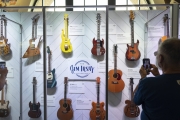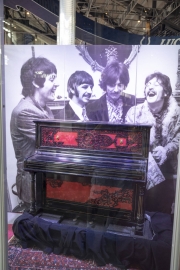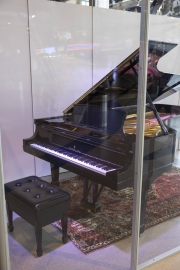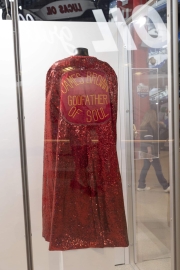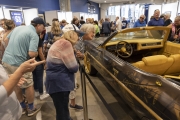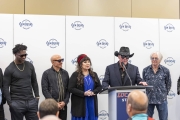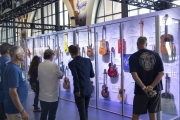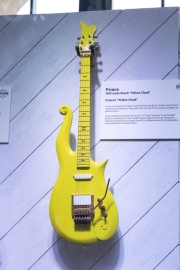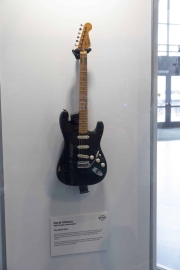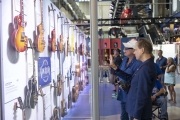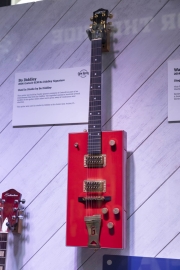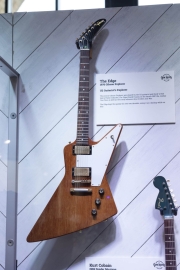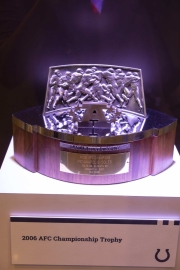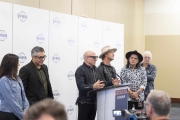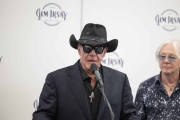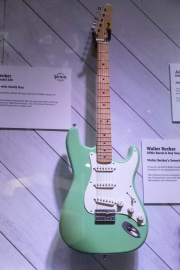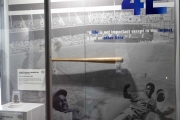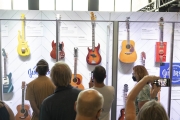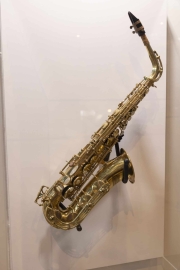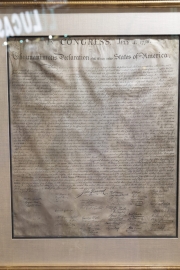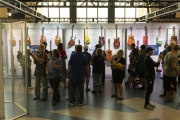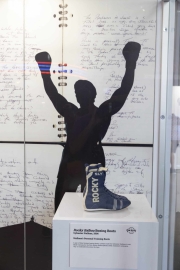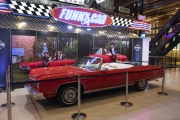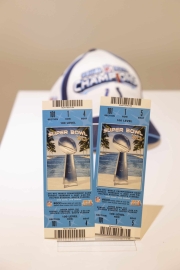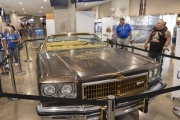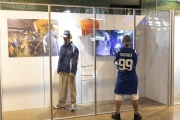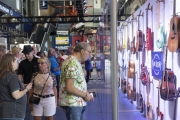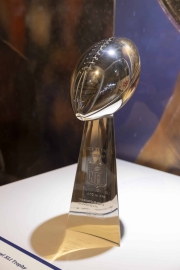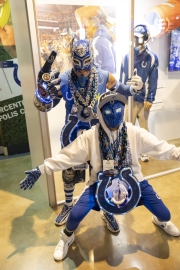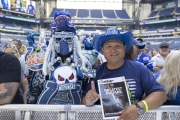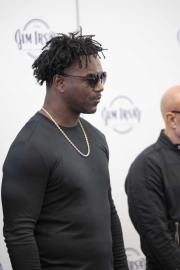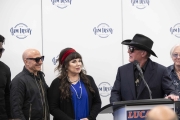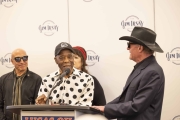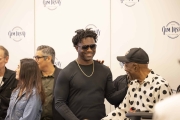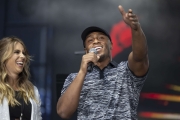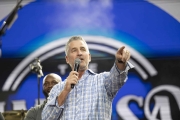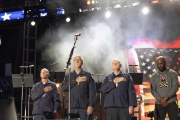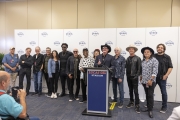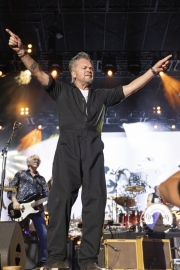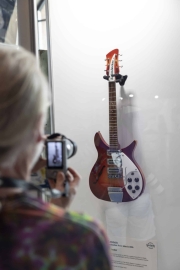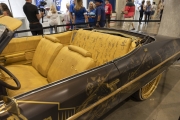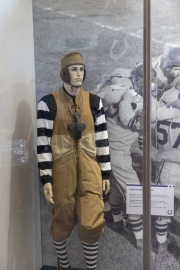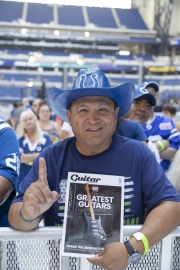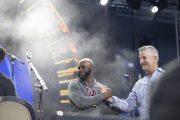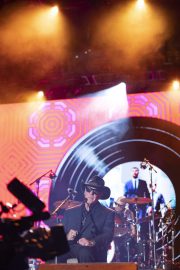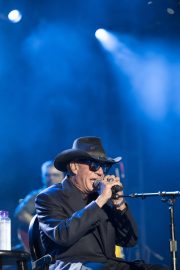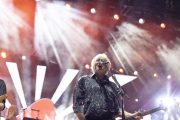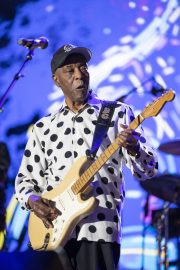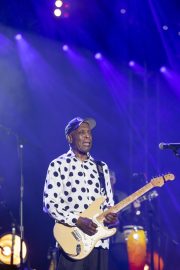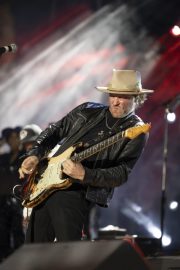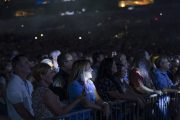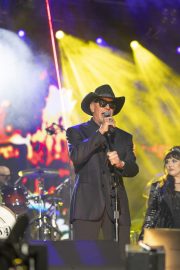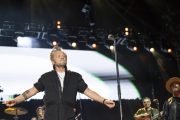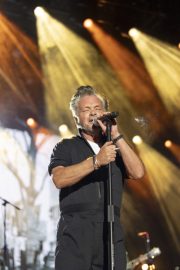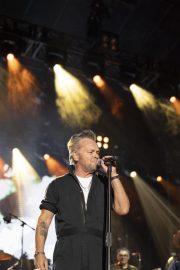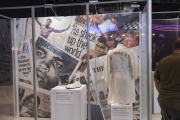Photos From The Jim Irsay Collection And Concerts

The Jim Irsay Collection of guitars.Photos by Tony Valainis
THE JIM IRSAY Collection is just as quirky as the man who created it, Indianapolis Colts owner Jim Irsay. The product of a quarter-century of feverish gathering, this massive cross section of musical, pop cultural, and political history includes everything from Abraham Lincoln’s pocketknife to Jack Kerouac’s manuscript for the novel On the Road. If Irsay’s fondest wish comes true, his wildly eclectic collection will one day reside in its own wildly eclectic museum. This fall, it’s gone on a national tour, with stops in Indianapolis (natch), New York City, and Los Angeles, to name a few locations. Here are some selections from the roughly 9 million oddball facts and anecdotes surrounding it.
Irsay’s lineup of famous guitars has been called the “greatest on earth.” It’s hard to argue with this assessment. He paid $965,000 for the Newport Stratocaster Bob Dylan played at the 1965 Newport Festival, when he and his band went “electric” for the first time; dropped $4.4 million for Nirvana frontman Kurt Cobain’s Fender Mustang; and $4 million for Pink Floyd guitarist David Gimour’s black Fender Stratocaster.
However, the musical instrument with the most celebrity fingerprints is likely a piano. Irsay possesses a Steinway that Elton John used for years, including during a 1974 Madison Square Garden show where John Lennon performed several songs as John’s guest—which turned out to be the former Beatle’s last live performance. In 1977, the piano was used by Freddie Mercury for a 1977 Queen tour, and then by Paul McCartney during 1985’s Live Aid concert.

None other than gonzo journalist Hunter S. Thompson encouraged Irsay to purchase Kerouac’s On the Road manuscript. It’s easy to see why a literary loose cannon like Thompson would want Irsay to purchase the manuscript (which he did, for $2.4 million). It’s a 200-foot scroll upon which Kerouac pounded out his most famous missive during a weekslong, alcohol- and drug-fueled frenzy. And speaking of drug-fueled missives, in 1998, Thompson sent Irsay an equally impassioned plea for the Colts to draft QB Ryan Leaf instead of Peyton Manning. This time, Irsay wisely declined.
Irsay didn’t procure most of this stuff personally. Many items, if not most of the Irsay Collection, were acquired at auction, but Irsay usually wasn’t sitting in the crowd waving a tiny paddle with a number on it. He typically sets a ceiling on how much he wants to spend and leaves the actual in-person bidding to an intermediary.
After decades of bidding in absentia, he’s developed something of a sixth sense about how much an item will go for. He attributes this both to experience and mysticism. “It’s not really as much as the intellect of the mind,” he told The Daily Mail. “It’s more of the spirit and what comes to me.”
Nevertheless, he doesn’t win every bidding war. Irsay is still sore over not obtaining Wilson, the anthropomorphic volleyball from the Tom Hanks movie Cast Away, which sold for $308,000. “I was kind of early in the process, and I was outbid,” Irsay told guitar.com. “I’ll never let that happen again.”
In spite of that vow, he almost let Kurt Cobain’s guitar slip through his fingers. Before the auction, Irsay placed his maximum bid at $3.75 million ($4.4 million with auction fees included). Then (because it was the middle of the night in Hawaii, where he was at the time) he went to bed. The guitar promptly ignited a furious bidding war, which Irsay’s representative won by offering the max $3.75 million. “If the (other bidder) would have gone to $4 million, I would have been out because I was asleep,” Irsay told The Daily Mail. Interestingly, experts only expected the guitar to go for around $600,000.
He’s still adding to the collection … and keeping it topical. Last May, Irsay purchased a baseball that was signed by Ukrainian president Volodymyr Zelenskyy during his visit to New York City in 2019. It sold for $50,000 (and probably could have been obtained for $50 before Russia invaded Ukraine). About $15,000 of the ball’s sale price went to Ukrainian relief organizations.
If the museum he wants gets built, it might not have a lot of velvet ropes or bulletproof-glass enclosures. “It’s so important to me that in the museum, people can play things and touch them,” he told guitar.com. Indeed, he’s not shy about allowing his numerous musical celebrity friends to play guitars from his collection, and will occasionally do it himself.

